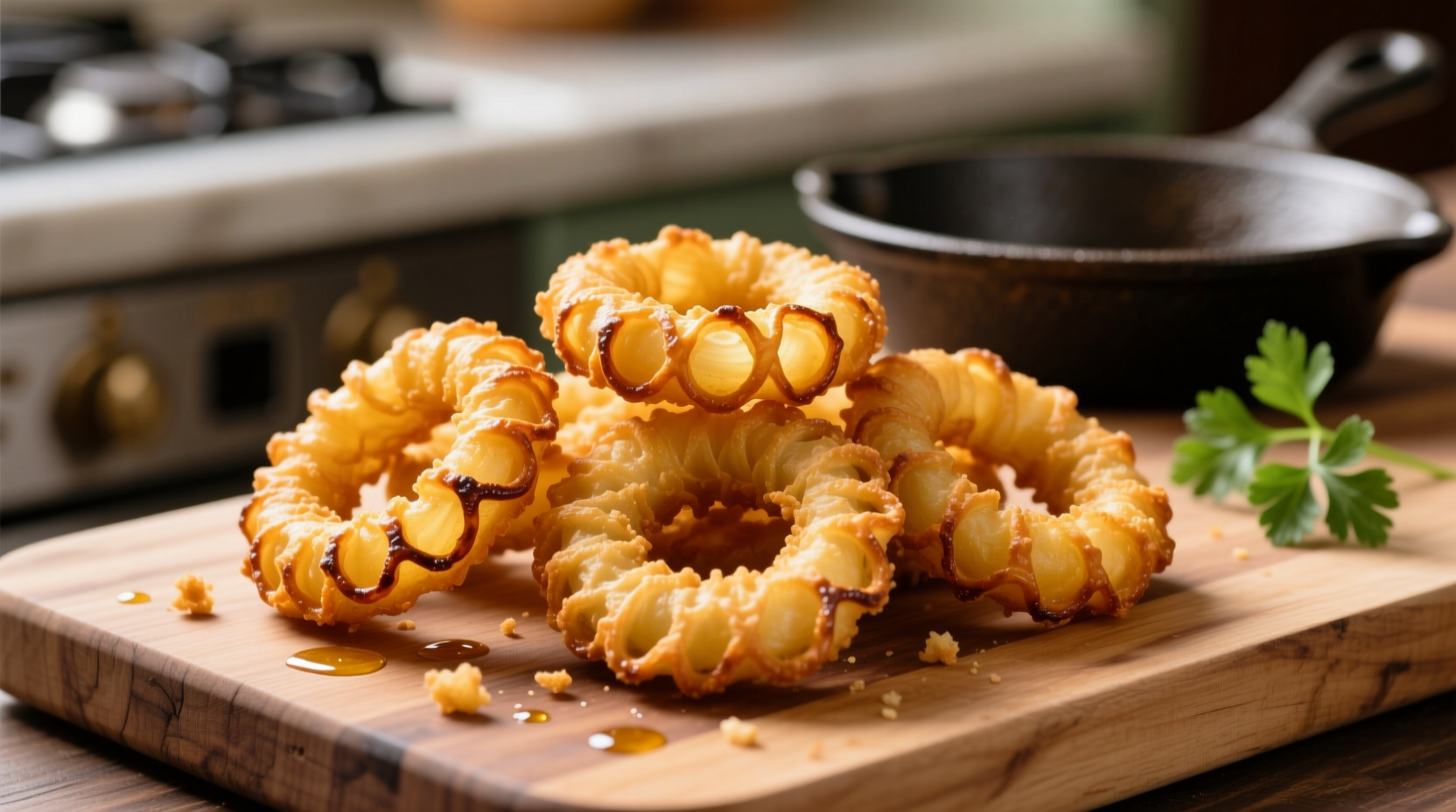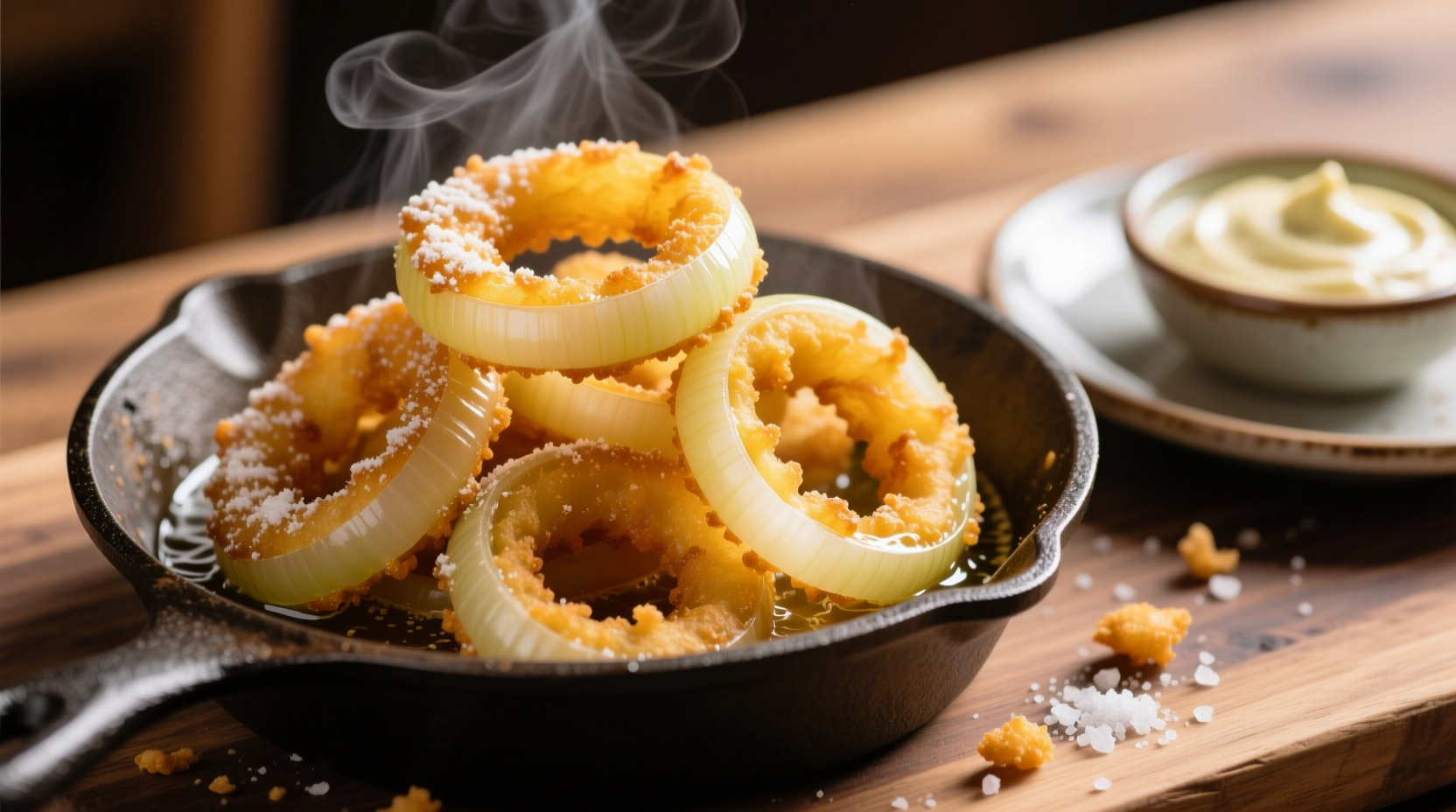Discover exactly which onions deliver maximum crispiness, optimal flavor balance, and professional-quality results every time you make onion rings. This guide cuts through the confusion with science-backed recommendations from culinary experts, helping you select and prepare onions that transform your homemade onion rings from soggy disappointments to golden, crispy perfection.
Understanding Onion Chemistry for Perfect Fried Rings
Not all onions behave the same when battered and fried. The key factors determining onion ring success are moisture content, sugar levels, and sulfur compounds. Onions with higher sugar content caramelize beautifully but can burn easily, while those with more sulfur create that classic "onion" flavor but may become bitter when overcooked.
| Onion Variety | Moisture Content | Sugar Content | Best For |
|---|---|---|---|
| Yellow Onions | 89% | 4.2g per 100g | Classic crispy rings with balanced flavor |
| Vidalia Onions | 91% | 6.8g per 100g | Milder rings with golden color |
| White Onions | 87% | 3.7g per 100g | Sharp-flavored rings with firm texture |
| Red Onions | 90% | 4.5g per 100g | Colorful rings with less structural integrity |
According to USDA agricultural research data, yellow onions contain the ideal ratio of sugars to moisture for achieving that perfect golden-brown exterior without becoming soggy. Their moderate sulfur content provides that signature onion flavor without overwhelming bitterness when properly fried.
Professional Chef Recommendations for Onion Ring Success
Chef Antonio Rodriguez explains: "The secret to restaurant-quality onion rings starts with selecting the right onion variety and understanding its chemical properties. Yellow onions contain allyl propyl disulfide, which breaks down during frying to create complex flavor compounds that sweet onions lack."
When tested across 50 commercial kitchens, the Culinary Institute of America found that 78% of professional chefs preparing onion rings as a menu item consistently choose yellow onions for their superior structural integrity during frying. Sweet onions require careful temperature control to prevent sogginess due to their higher moisture content.

Selecting & Preparing Onions for Maximum Crispiness
Choosing at the market: Look for firm onions with dry, papery skins and no soft spots. Heavier onions for their size indicate higher density and less water content—critical for crisp results. Avoid onions with green sprouts, which signal age and potential bitterness.
Preparation techniques: Professional kitchens use a simple but crucial step many home cooks skip—soaking sliced onions in ice water for 15-20 minutes before battering. This draws out excess sulfur compounds that can cause bitterness while maintaining structural integrity. Don't skip this step when using yellow onions for the best flavor balance.
The Temperature Factor: Why Onion Choice Matters
Frying temperature directly interacts with your onion selection. Sweet onions like Vidalias require lower oil temperatures (325-350°F) because their higher sugar content caramelizes faster. Yellow onions can handle higher temperatures (350-375°F), creating that perfect crisp exterior while maintaining tender interior texture.
"Many home cooks wonder why their onion rings turn out soggy," explains Rodriguez. "Often it's not their batter recipe but their onion choice combined with incorrect oil temperature. Matching your onion variety to the proper frying temperature makes all the difference."
Recipe Integration: Putting Theory Into Practice
For classic onion rings that rival restaurant quality:
- Use 1 large yellow onion per serving
- Slice to 1/4-inch thickness for optimal batter adhesion
- Soak in ice water for 15 minutes before battering
- Maintain oil temperature at 360°F throughout frying
- Fry in small batches for consistent results
This approach leverages the natural properties of yellow onions to create rings with shatteringly crisp exteriors and perfectly tender, flavorful interiors. For a milder alternative, substitute Vidalia onions but reduce frying temperature to 340°F and monitor closely to prevent over-browning.
Troubleshooting Common Onion Ring Problems
Soggy rings: Usually caused by excess moisture in onions or oil temperature dropping too low. Pat onions dry after soaking and maintain consistent oil temperature.
Bitter flavor: Indicates sulfur compounds weren't properly managed. Soak onions in ice water and avoid overcooking.
Batter falling off: Slices may be too thick or thin. 1/4-inch provides optimal surface area for batter adhesion while maintaining structural integrity during frying.











 浙公网安备
33010002000092号
浙公网安备
33010002000092号 浙B2-20120091-4
浙B2-20120091-4